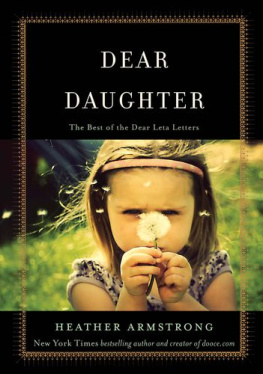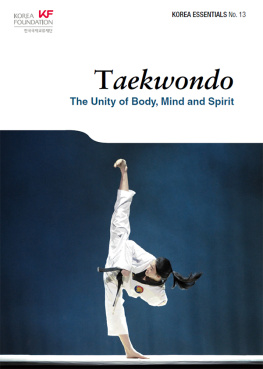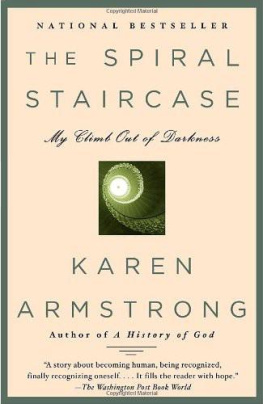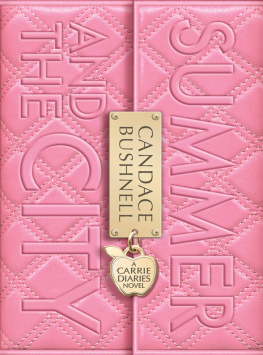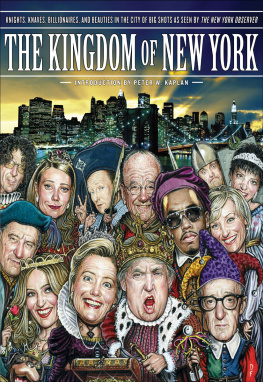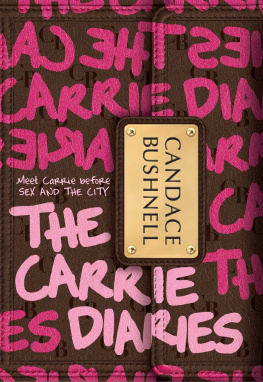Thank you for downloading this Simon & Schuster ebook.
Get a FREE ebook when you join our mailing list. Plus, get updates on new releases, deals, recommended reads, and more from Simon & Schuster. Click below to sign up and see terms and conditions.
CLICK HERE TO SIGN UP
Already a subscriber? Provide your email again so we can register this ebook and send you more of what you like to read. You will continue to receive exclusive offers in your inbox.
We hope you enjoyed reading this Simon & Schuster ebook.
Get a FREE ebook when you join our mailing list. Plus, get updates on new releases, deals, recommended reads, and more from Simon & Schuster. Click below to sign up and see terms and conditions.
CLICK HERE TO SIGN UP
Already a subscriber? Provide your email again so we can register this ebook and send you more of what you like to read. You will continue to receive exclusive offers in your inbox.
ALSO BY
JENNIFER KEISHIN ARMSTRONG
Seinfeldia
Mary and Lou and Rhoda and Ted
Sexy Feminism (with Heather Wood Rudlph)
Why? Because We Still Like You

Simon & Schuster
1230 Avenue of the Americas
New York, NY 10020
www.SimonandSchuster.com
Copyright 2018 by Jennifer Armstrong
All rights reserved, including the right to reproduce this book or portions thereof in any form whatsoever. For information, address Simon & Schuster Subsidiary Rights Department, 1230 Avenue of the Americas, New York, NY 10020.
First Simon & Schuster hardcover edition June 2018
SIMON & SCHUSTER and colophon are registered trademarks of Simon & Schuster, Inc.
For information about special discounts for bulk purchases, please contact Simon & Schuster Special Sales at 1-866-506-1949 or .
The Simon & Schuster Speakers Bureau can bring authors to your live event. For more information or to book an event, contact the Simon & Schuster Speakers Bureau at 1-866-248-3049 or visit our website at www.simonspeakers.com.
Interior design by Lewelin Polanco
Jacket design by Spencer Kimble
Jacket art by Illustrateurs/Shutterstock and Leontura/Getty Images
Library of Congress Cataloging-in-Publication Data is available.
ISBN 978-1-5011-6482-8
ISBN 978-1-5011-6484-2 (ebook)
For my father, who definitely did not watch Sex and the City , but who would nonetheless have read every word here and gone to every book event he could and bought copies for everyone he knew.
Contents
Note on Reporting Methods
The following narrative scenes are re-created with the help of original interviews with those who were present, as well as accounts from newspapers, books, magazines, recorded interviews, and other research materials. Ive indicated within the text, when necessary, who is doing the recounting. Scenes were checked by multiple sources when possible; dialogue comes from the accounts of those who were present. Full notes on specific sourcing are available at the end of the book.
Introduction
I left my fianc for Sex and the City .
At the time, in the early 2000s, I was in my late twenties. I didnt know who I was, and it showed. One day I was wearing a striped sweater and beige slacks, purchased from a mall near where I lived in suburban New Jersey, to work at my magazine job in nearby New York City; the next day I was buying black spiky heels, a hot-pink miniskirt, and a black T-shirt from a thrift store in the citys punk-rock-steeped East Village neighborhood. I even recall a one-month hippie phase with faded jeans, fringed belts, and off-the-shoulder peasant shirts that I thought were particularly cool to wear to literary readings in dark downtown bars. Very Joan Didion.
I lead with the clothes because Sex and the City demonstrated how much they can mean. They indicated, for me, that so much was wrong, but that something right wanted to emerge. I was trying on selves. I was searching for an identity beyond what my upbringing in the Chicago suburbs, as the child of a dad who went to an office every day and a mom who stayed home with my younger brother and sister and me, presented as my ready-to-wear options: girlfriend, wife, or mother. I wanted a nameplate necklace like Carrie Bradshaws and a distinct, authentic, messy identity to go with it. Sex and the City helped me find myself.
I fell for the show immediately when it premiered on HBO in the summer of 1998. As a TV nerd, I watched from the beginning; I read my Entertainment Weekly and other pop culture magazines dutifully, and the hype told me to pay attention to this one. The show followed four New York women through their simultaneously harrowing and glamorous dating lives. Carrie, who writes a sex-and-relationships column for a New York newspaper, narrates with excessive punning and digestible insight into modern single life. Charlotte longs for a traditionally romantic handsome prince, a type conspicuously absent from the Manhattan dating pool. Miranda prefers to focus on her career as a lawyer and make wisecracks rather than actively pursue the frustration of dating. And Samantha, the oldest of the four, has long since turned off her romantic longings in favor of sexual conquest.
Their stories started out simple: Carrie experiments with unattached sex. Miranda dates Carries younger beta-male friend, Skipper. Charlotte meets a guy she likes until he requests anal sex. Samantha hooks up with a serial modelizer who fetishizes fashion glamazons. As a woman still in her twenties who was living in the suburbs of Chicago and had slept with only one man total, I was entranced. On one level, I coveted the life they were depicting, and on another, I was happy not to be facing such a scary landscape: the sex part and the city part.
My fear would, however, eventually give way to a longing for a larger life like that depicted on the showand this shift would mark the biggest turning point in my adult life. This impact of what many have derided as a featherweight TV show is what, nearly twenty years later, inspired me to find out how author Candace Bushnell, and then a group of writers and producers, turned their own life stories into a show that could so profoundly affect others lives. In this book, I will share that storyall of those storieswith you.
But first, I want to give credit where its due and tell you how Sex and the City helped to change my life. My college boyfriend and I moved to the New York City area together in 2001, from my hometown of Chicago. Our relationship thus far looked exactly the way I, as a white, suburban, Midwestern girl, was taught life should go. This was the third time I moved to accommodate his career, and I figured this time would pay off in an engagement, marriage, and happily-ever-after. I was an overachiever, and had always assumed those milestones came as part of the adult prize package I was working toward.
In New York City, I would pursue my professional dream, a job at a national magazineand being close to the dreamy cityscape Id seen depicted on the first three and a half seasons of Sex and the City wouldnt hurt. The show reached the heights of its powers in its fourth season that year, sending out a siren song to independent women throughout America: Come to New York, and your fantasy life will follow. I wasnt deluded about this; I didnt expect to instantly land a high-paying job as a sex columnist at a New York newspaper and find myself walking red carpets like Carrie. I just thought it would be fun to, say, walk past a cool new restaurant and see a glamorous party going on inside, or sip a cosmopolitan at a bar featured on the show, or enjoy a cupcake at Magnolia Bakery in the West Village like Carrie and Miranda did.
Next page

